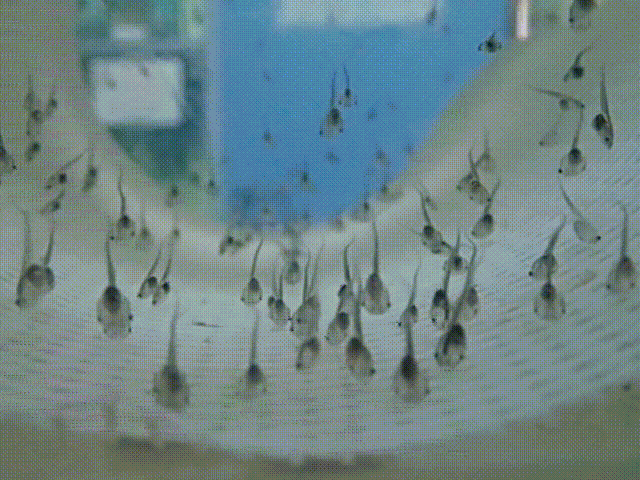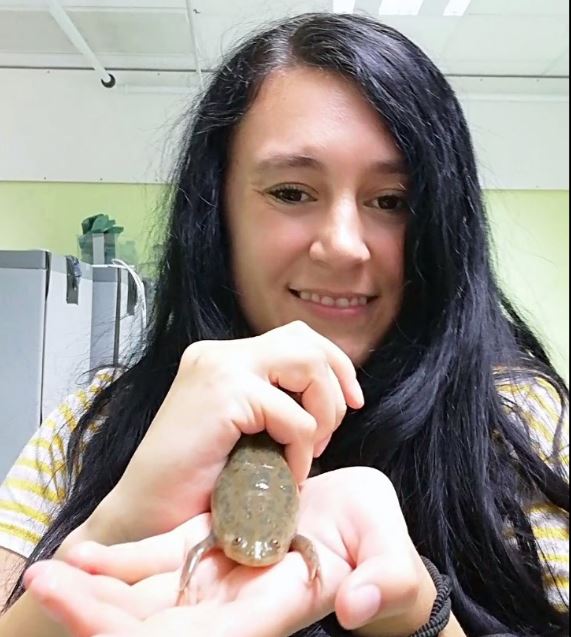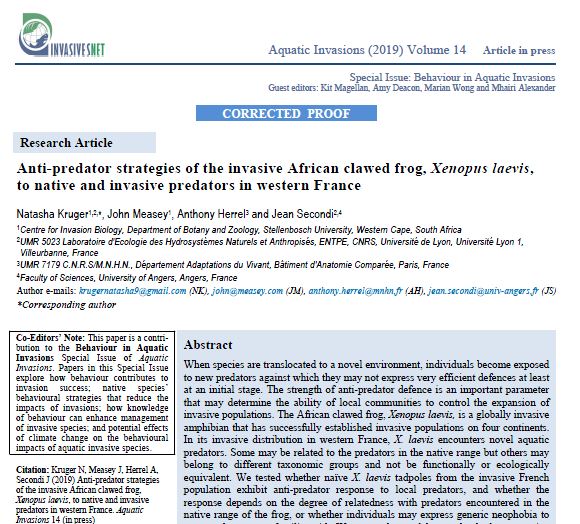What do tadpoles do when they sniff a predator?
Natasha Kruger asked this question of populations of the invasive African Clawed Frog in a study conducted with Jean Secondi in France. Clawed frogs have been invasive there for ~30 years, but a number of studies are suggesting that they have already started to adapt to the local conditions (see here).

As an invasive frog, once you’ve been moved to the new environment, not only do you have to cope with new conditions, but your tadpoles do too. This means that tadpoles should be able to respond to new predators, as well as ones that they already know. This was the basis for the work that Natasha conducted on tadpoles of the invasive African clawed frog, Xenopus laevis, in France.
Natasha tested to see how tadpoles reacted to known and unknown predators. For example, she tried cues from aquatic snails and another invasive species in France, the red swamp crayfish, Procambarus clarkii.
Tadpoles were placed into fresh water in a cup with a cross drawn across the bottom. The cue was then dropped from above and their reaction filmed. She was particularly interested in the number of times that the tadpoles crossed the lines in the cup – showing a response to the cue.
Like other tadpoles, African clawed frogs were found to decrease their activity in the presence of a predator. That is they crossed the line less often when cues were given, compared to novel cues.
The early version of the manuscript is now up online and you can enjoy reading it here:
Kruger, N., Measey, J., Herrel, A., & Secondi, J. (in press) Anti-predator strategies of the invasive African clawed frog, Xenopus laevis, to native and invasive predators in western France. Aquatic Invasions



